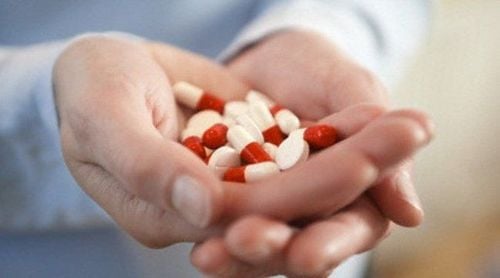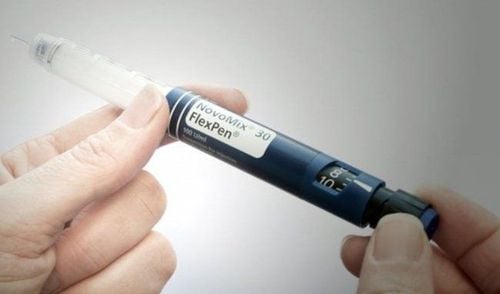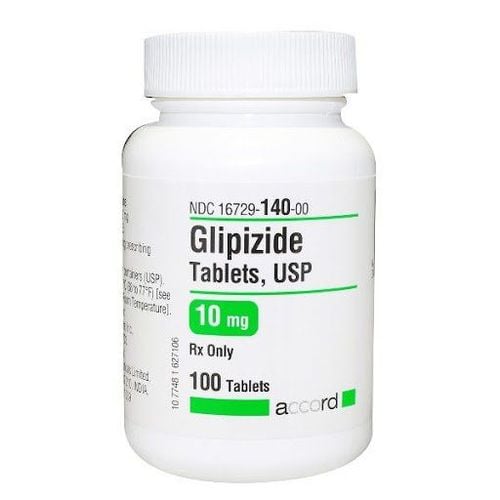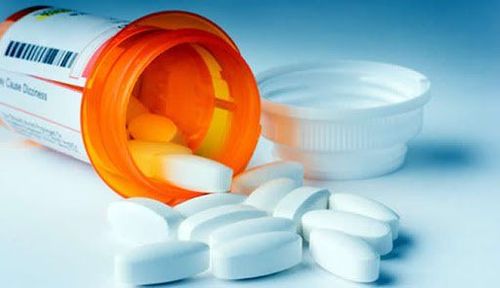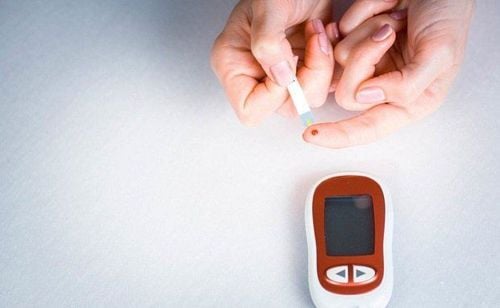This is an automatically translated article.
The article was professionally consulted with Master, Doctor Do Xuan Chien - Head of Department of Medical Examination & Internal Medicine - Vinmec Ha Long International General Hospital.Type 1 diabetes (formerly known as insulin-dependent diabetes) is a disease in which the beta cells of the pancreas (insulin-secreting cells) are destroyed, resulting in insulin deficiency and the need for an external source of insulin. outside in the body.
1. Causes of type 1 diabetes
Type 1 diabetes is an autoimmune condition. This means that the person's immune system mistakenly attacks and destroys the beta cells in the pancreas that produce insulin, causing permanent damage.Currently, doctors have not found the exact cause of the body's own attack on the pancreas, possibly genetic and environmental. Lifestyle factors were not associated with the cause of type 1 diabetes.
2. Diagnosing Type 1 Diabetes
Diagnostic tests include:Hemoglobin A1c (HbA1c) test. This blood test shows your average blood sugar level over the past two to three months by measuring the percentage of blood sugar bound to the oxygen-carrying protein in red blood cells. The higher your blood sugar levels, the more hemoglobin you have with sugar attached. An A1C level of 6.5% or higher on two separate tests indicates diabetes.
If a Hemoglobin A1c (HbA1c) test is not available or there are conditions that make the Hemoglobin A1c (HbA1c) test inaccurate - such as pregnancy or an uncommon form of hemoglobin (hemoglobin variant), your doctor may Other tests can be used:
Random blood sugar testing. A blood sample will be taken at a random time and may be tested repeatedly. Blood sugar values are expressed in milligrams per deciliter (mg/dL) or millimoles per liter (mmol/L). Regardless of when you last ate, a random blood sugar level of 200 mg/dL (11.1 mmol/L) or higher indicates diabetes, especially when combined with any of these markers. signs and symptoms of diabetes, such as frequent urination and thirst. Fasting blood sugar test. A blood sample will be taken early in the morning. A fasting blood sugar level below 100 mg/dL (5.6 mmol/L) is normal. A fasting blood glucose level between 100 and 125 mg/dL (5.6 to 6.9 mmol/L) is considered prediabetes. If it is 126 mg/dL (7 mmol/L) or higher on two separate tests, you will be diagnosed with diabetes. If you've been diagnosed with diabetes, your doctor may also run blood tests to check for autoantibodies that are common in type 1 diabetes. These tests help your doctor distinguish type 1 diabetes. and type 2 when the diagnosis is uncertain. The presence of ketones - a byproduct from the breakdown of fats in your urine - also suggests type 1 diabetes, rather than type 2.
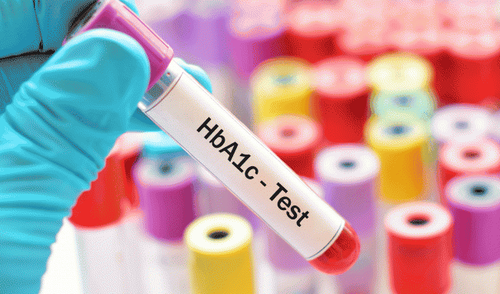
3. After diagnosis
You will regularly visit your doctor to discuss diabetes management. During these visits, your doctor will check your A1C level. Your A1C goal can vary depending on age and other factors, but the American Diabetes Association generally recommends that an A1C level be less than 7%, which equates to an estimated mean glucose level of 154mg/dL (8 ,5 mmol/L).Compared to daily blood glucose tests, A1C testing better shows how well the diabetes treatment plan is working. Elevated A1C levels may signal the need for a change in insulin regimen, nutrition, or both.
In addition to the A1C test, your doctor will also periodically take blood and urine samples to check your cholesterol levels, thyroid function, liver function, and kidney function. Your doctor will also evaluate your blood pressure and will check the sites where you check your blood sugar and the sites of insulin injections.
4. Treatment of type 1 diabetes
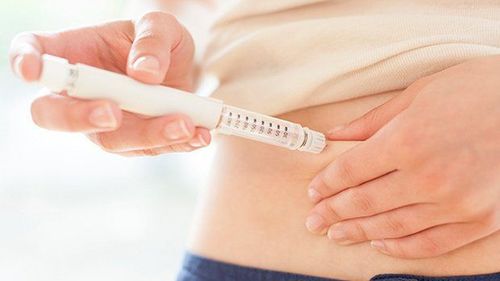
Use of insulin Carbohydrates, fats and proteins Monitor blood sugar regularly Use healthy foods Exercise regularly and maintain a healthy weight The goal is to keep Keep your blood sugar as close to normal as possible to delay or prevent complications. In general, the goal is to keep your daytime blood sugar before meals between 80 and 130 mg/dL (4.44 to 7.2 mmol/L) and sugar no higher than 180 mg/dL ( 10 mmol/L) two hours after eating.
4.1 Insulin and Other Medicines Anyone with type 1 diabetes needs lifelong insulin treatment. There are many types of insulin including:
Short-acting insulin Rapid-acting insulin Intermediate-acting insulin Long-acting insulin Examples of short-acting insulin include Humulin R and Novolin R. Examples of rapid-acting insulin are insulin glulisine (Apidra), insulin lispro (Humalog) and insulin aspart (Novolog). Long-acting insulin includes insulin glargine (Lantus, Toujeo Solostar), insulin detemir (Levemir), and insulin degludec (Tresiba). Intermediate-acting insulins include NPH insulin (Novolin N, Humulin N).
4.2 Artificial pancreas In September 2016, the US Food and Drug Administration approved the treatment of artificial pancreas for the first time for people with type 1 diabetes 14 years of age and older. The implant links a continuous glucose monitor, which checks blood sugar every five minutes, to pump insulin. The device automatically delivers the correct amount of insulin as the monitor indicates when it is needed. Currently, there are many artificial pancreas systems that are still in clinical trials.
4.3 Other medicines Complementary medicines may also be prescribed for people with type 1 diabetes, such as:
Medicines for high blood pressure. Your doctor may prescribe angiotensin-converting enzyme inhibitors or angiotensin II receptor blockers (ARBs) to help keep your kidneys healthier. These drugs are recommended for people with diabetes who have blood pressure above 140/90 mm of mercury (mm Hg). Aspirin. Your doctor may recommend that you take a daily aspirin to protect your heart. Cholesterol-lowering drugs. Guidelines for cholesterol use tend to be more aggressive for people with diabetes because of the increased risk of cardiovascular disease. The American Diabetes Association recommends that low-density lipoprotein (LDL) cholesterol be below 100 mg dL (2.6 mmol/L). Your high-density lipoprotein (HDL or good fat) cholesterol is recommended to be above 50 mg/dL (1.3 mmol/L) in women and above 40 mg/dL (1 mmol/L) in men. Triglycerides, ideally when they are below 150 mg/dL (1.7 mmol/L).
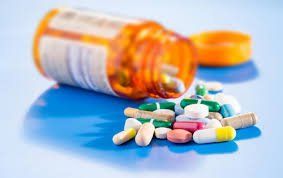
The American Diabetes Association recommends checking your blood sugar before meals and snacks, at bedtime, before exercising or driving, and if you suspect you have low blood sugar. Careful monitoring is the only way to ensure that your blood sugar remains within your target range, and more frequent monitoring can lower A1C levels.
Even if you take insulin and stick to your diet on schedule, blood sugar levels can fluctuate unpredictably. You should learn and document how your blood sugar levels change with food use, activity, illness, medications, stress, hormonal changes, and alcohol.
4.5 Eat healthy and watch your carbohydrate intake Patients need to focus your diet on nutritious, low fat, high fiber foods such as:
Fruits Vegetables Grains Experts Nutritionists will recommend eating less animal products and refined carbohydrates, such as white bread and sweets. This healthy diet is recommended even for people without diabetes.
You will need to learn how to count the carbohydrates in food so that you can give yourself enough insulin to properly metabolize those carbohydrates.
4.6 Physical activity Everyone needs regular exercise, and people with type 1 diabetes are no exception. First, your doctor agrees to let you exercise. You then choose activities you enjoy, such as walking or swimming, and make them part of your daily routine. Set a goal of at least 150 minutes of aerobic exercise per week, no more than two days without exercise, a goal for children of at least one hour per day.
Remember that physical activity lowers blood sugar. If you start a new activity, check your blood sugar more often until you know how the activity affects your blood sugar. You may need to adjust your meal plan or insulin dose to compensate for the increased activity.
At Vinmec International General Hospital, we always deploy a screening package for diabetes and dyslipidemia to help detect pre-diabetes early, accurately classify diabetes type, develop a nutritional regimen, monitoring to minimize the risk and complications caused by diabetes.
Please dial HOTLINE for more information or register for an appointment HERE. Download MyVinmec app to make appointments faster and to manage your bookings easily.
Articles source references: Mayoclinic.org, ncbi.nlm.nih.gov, webmd.com




